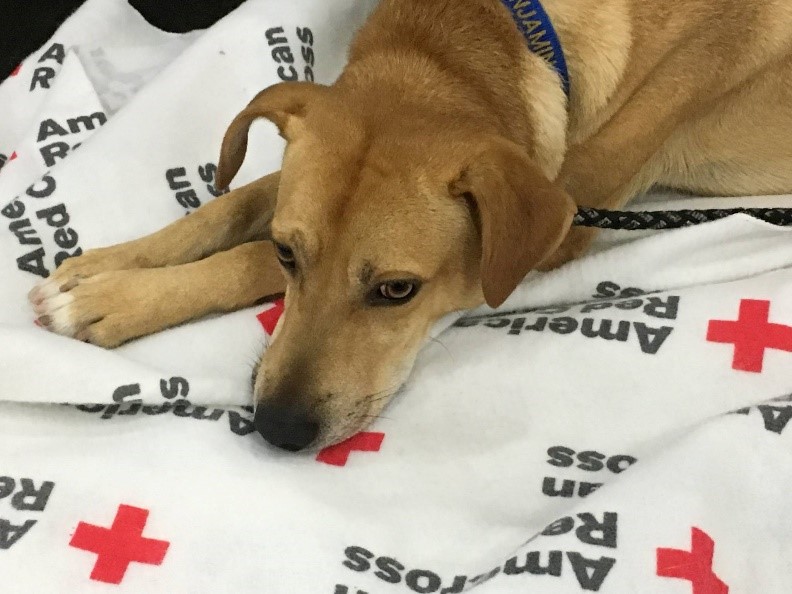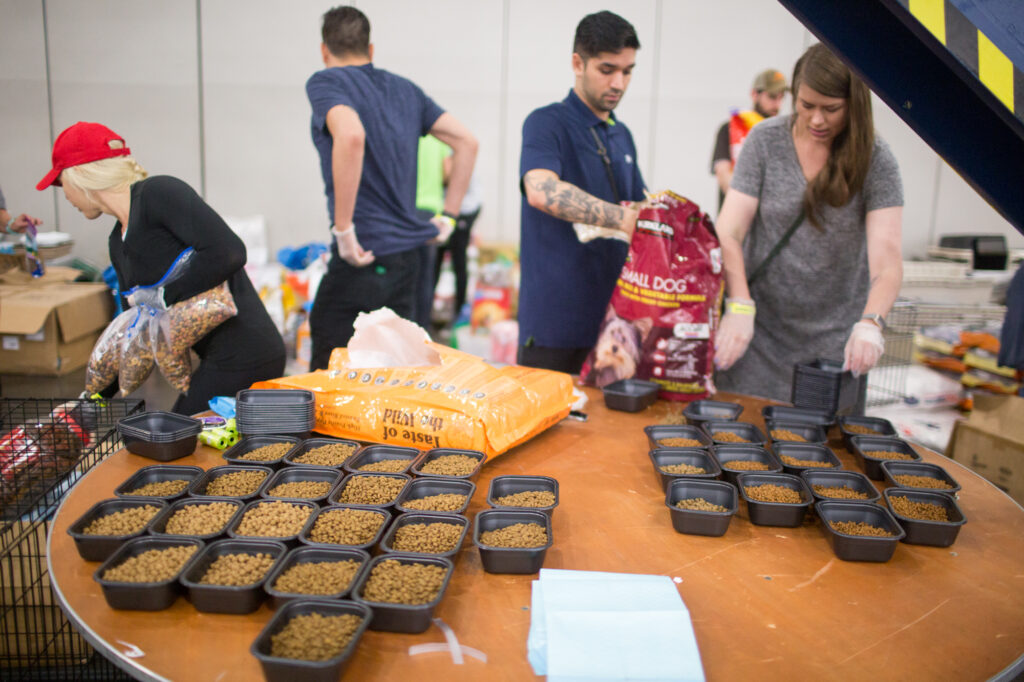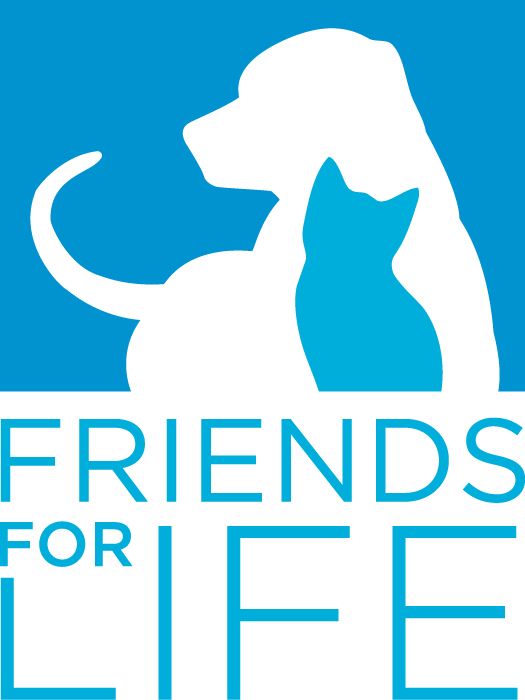By Anna Mayzenberg

Having found a safe haven, a dog rests on an American Red Cross blanket. The change in policy to allow pets in the shelter was a big step forward in responding to disasters. Photo courtesy of Friends For Life.
The first day the George R. Brown Convention Center
(GRB) opened as a Hurricane Harvey shelter, pet owners arriving there, having escaped the floodwaters, faced a horrible dilemma: stay outside in the rain to comfort their pets or abandon them to stay dry themselves. The Red Cross, which frequently manages disaster shelters, such as GRB, does not generally allow pets due to concerns about cleanliness, disorderly animals, and the safety of disaster evacuees with respiratory conditions. As a result, some pet owners endanger their own lives by refusing to evacuate because they are afraid their pets will die if left behind.
Salis Shuttlesworth, founder and executive director at Friends For Life Shelter, could not sit by and watch this happen. As she came to understand both the concerns of the Red Cross and the necessity of providing a potentially life-saving shelter, she was determined to reconcile the two issues. By bridging that gap during Harvey, she affirmed that for “the first time in U.S. history, a cohabitated shelter pre-approved by a city and carried out in a mega- shelter in a major U.S. city.”

The City of Houston opened the GRB shelter on August 27, 2017, when other facilities became overwhelmed with evacuees. After seeing the distress of pet owners the first night, associate medical director for Houston Fire Department Emergency Medical Services (HFD EMS) and a member of the city’s animal advisory committee, Dr. Chris Souders, worked alongside committee members to obtain approvals to designate a section of the shelter for people with their pets. After receiving approval, Souders contacted Shuttlesworth, who volunteered to set up the space and manage it, determined to demonstrate that a cohabitated pet shelter was not inherently dangerous and dirty; done right, it could be a place of comfort and safety. In doing so, she set a precedent for the future.
Click here to read the full article or click on Buy Magazines to purchase a print copy or subscribe.

For additional information, watch this CW 39 news report detailing the inspiration behind the cohabitated shelter that stemmed from the aftermath of Hurricane Katrina.

Click here to browse through the manual created in partnership with Friends for Life, USDA, American National Red Cross, and the Louisiana Department of Agriculture and Forestry.

 Follow
Follow